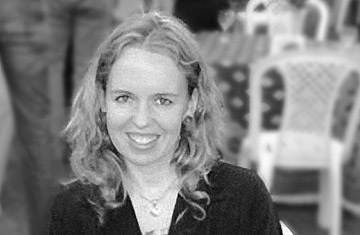
An undated photo of aid worker Linda Norgrove
For two days, the parents of Scottish aid worker Linda Norgrove struggled to come to terms with the news that their 36-year-old daughter had been murdered by her Taliban captors as U.S. special forces on Oct. 8 attempted to free her from the compound where she was being held in a remote, mountainous region of northeastern Afghanistan.
So it is hard to imagine their dismay when, on Monday morning, they took a phone call from British Prime Minister David Cameron, who said it now appeared that she may have been killed by a grenade thrown by one of her would-be rescuers.
It fell to Cameron to deliver the message after the U.S. commander in Afghanistan, General David Petraeus, called him to say the original explanation for Norgrove's death and the one given with such apparent certainty on Oct. 9 — that she had died as a result of a captor's exploding a suicide vest — may have been wrong.
Cameron, who was forced to postpone a routine Downing Street press conference for an hour while he handled this development, then faced the media to explain that he had given clearance for the rescue bid, believing Norgrove's life had been in imminent danger from the moment she was kidnapped. The great fear was that she "was going to be passed up the terrorist chain, which would increase further the already high risk that she would be killed," Cameron said. Norgrove was seized in Kunar province while working for U.S. aid group DAI, which strives to boost the local economy.
Also on Monday, U.S. President Barack Obama spoke to Cameron and asked the Prime Minister to pass on his "deep condolences" to the family. A Downing Street spokesperson said the two men agreed that the decision to launch the rescue attempt had been right.
"The Prime Minister and the President agreed that it was now essential to get to the bottom of what had happened in the course of the rescue operation," the spokesperson said.
There will be a joint U.S.-U.K. investigation into the rescue bid, headed by U.S. Major General Joseph Votel, chief of staff of the U.S. Special Operations Command. The results are expected within days.
But already, second-guessing has started in the British media, with one underlying question at the heart of it: Was Norgrove the victim of a "shoot first, ask questions later" attitude by U.S. special forces, and would she still be alive had the SAS, as the British special forces are known, led the operation?
The question was put to Cameron during his press conference and reflects a widely held suspicion in the U.K. that U.S. forces sometimes display a reckless, gung-ho attitude to combat that owes more to Hollywood than military training.
Cameron was asked whether consideration had been given to using U.K. special forces, who might have been "less aggressive" than their American counterparts. He answered that U.S. special forces had worked in the region for years, were familiar with the territory and were the obvious choice for such a mission.
The former commander of British forces in Afghanistan, Colonel Richard Kemp, writing in the Daily Mirror, dismissed such speculation as wholly inaccurate. "Many people have said the outcome would have been different had the SAS carried out this mission. We will never know. But those who accuse the American rescuers of being overly aggressive or gung ho have perhaps never seen these amazingly professional, highly trained troops in action. They are every bit as good as our own — and every bit as self-critical."
Former airman John Nicol, who was shot down and held hostage by Saddam Hussein in the first Gulf War, in 1991, reinforced that view, telling TIME, "I have worked alongside U.S. forces for many years and I have to say I have never seen or witnessed this gung-ho attitude so many people seem to associate with them."
He also pointed out that so-called friendly-fire incidents occur with U.K. forces as well. In September, one soldier and three Afghans were killed when British forces launched a rescue mission to free U.K. journalist Stephen Farrell from his Taliban captors.
Commentators have also questioned the certainty with which U.S. officials announced on Oct. 9 that Norgrove had been killed by her captors. That question goes to the heart of how modern conflict is reported and the pressures for total transparency and instant answers — not easy in the "fog of war."
As Kemp wrote, "I don't recall a complex combat operation where the true facts emerged straightaway." In fact, there is an old military adage that the first accounts of any conflict are almost always invariably wrong.
Some British commentators have expressed fears that Norgrove's death will represent a long-term victory for the Taliban if it leads aid organizations to hesitate before traveling to the region as part of the vital Provincial Reconstruction Teams. In the more immediate future, however, key questions remain to be answered by the U.S.-U.K. inquiry, questions that the family of Linda Norgrove say they need answered as they come to terms with their loss.
